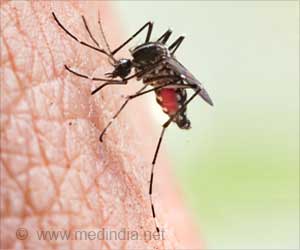Air pollution from crop residue burning costs India USD 30 billion annually, revealed new report.

‘Living in districts with air pollution from intense crop residue burning (CRB) is a leading risk factor for acute respiratory infection (ARI), especially among children less than five years, in northern India. ’





"Poor air quality is a recognized global public health epidemic, with levels of airborne particulate matter in Delhi spiking to 20 times the World Health Organization's safety threshold during certain days. Among other factors, smoke from the burning of agricultural crop residue by farmers in Haryana and Punjab especially contributes to Delhi's poor air, increasing the risk of ARI three-fold for those living in districts with intense crop burning," said IFPRI Research Fellow and co-author of the study, Samuel Scott. The study also estimated the economic cost of exposure to air pollution from crop residue burning at USD 30 billion or nearly Rs. 2 lakh crore annually for the three north Indian states of Punjab, Haryana and Delhi. The study, "Risk of acute respiratory infection from crop burning in India: estimating disease burden and economic welfare from satellite and national health survey data for 250,000 persons," co-authored by IFPRI's Samuel Scott and Avinash Kishore; CGIAR Research Program on Agriculture for Nutrition and Health's Devesh Roy; University of Washington's Suman Chakrabarti; and Oklahoma State University's Md. Tajuddin Khan, will be published in an upcoming edition of the International Journal of Epidemiology. The study analyzed health data from more than 250,000 individuals of all ages residing in rural and urban areas in India. It used NASA satellite data on fire activity to estimate the health impact of living in areas with intense crop burning by comparing them with areas not affected by CRB.
The researchers observed that as crop burning increased in the northern Indian state of Haryana, respiratory health worsened. Health was measured by the frequency of reported hospital visits for ARI symptoms [see attached chart]. They also examined other factors that could contribute to poor respiratory health such as firecracker burning during Diwali (it usually coincides with time of CRB) and motor vehicle density. In fact, economic losses owing to exposure to air pollution from firecracker burning are estimated to be around USD 7 billion or nearly Rs. 50 thousand crore a year. In five years, the economic loss due to burning of crop residue and firecrackers is estimated to be USD 190 billion, or nearly 1.7 per cent of India's GDP.
"Severe air pollution during winter months in northern India has led to a public health emergency. Crop burning will add to pollution and increase healthcare costs over time if immediate steps are not taken to reverse the situation. The negative health effects of crop burning will also lower the productivity of residents and may lead to long-term adverse impacts on the economy and health," said Suman Chakrabarti.
"Our study shows that it is not only the residents of Delhi, but also the women, children and men of rural Haryana who are the first victims of crop residue burning. Much of the public discussion o
Advertisement
"Programs and policies must simultaneously address indoor and outdoor pollution through a possible combination of bans and agricultural subsidies. Other important interventions for improving respiratory health are increasing household access to clean cooking fuels, electricity, and improved drainage systems," Kishore added.
Advertisement
Despite efforts from the Indian government, farmers continue to burn crop residues due to lack of convenient and affordable alternatives. Eliminating crop burning will not only improve human health but will also contribute to soil and plant biodiversity and will reduce greenhouse gas emissions.
Source-Eurekalert










